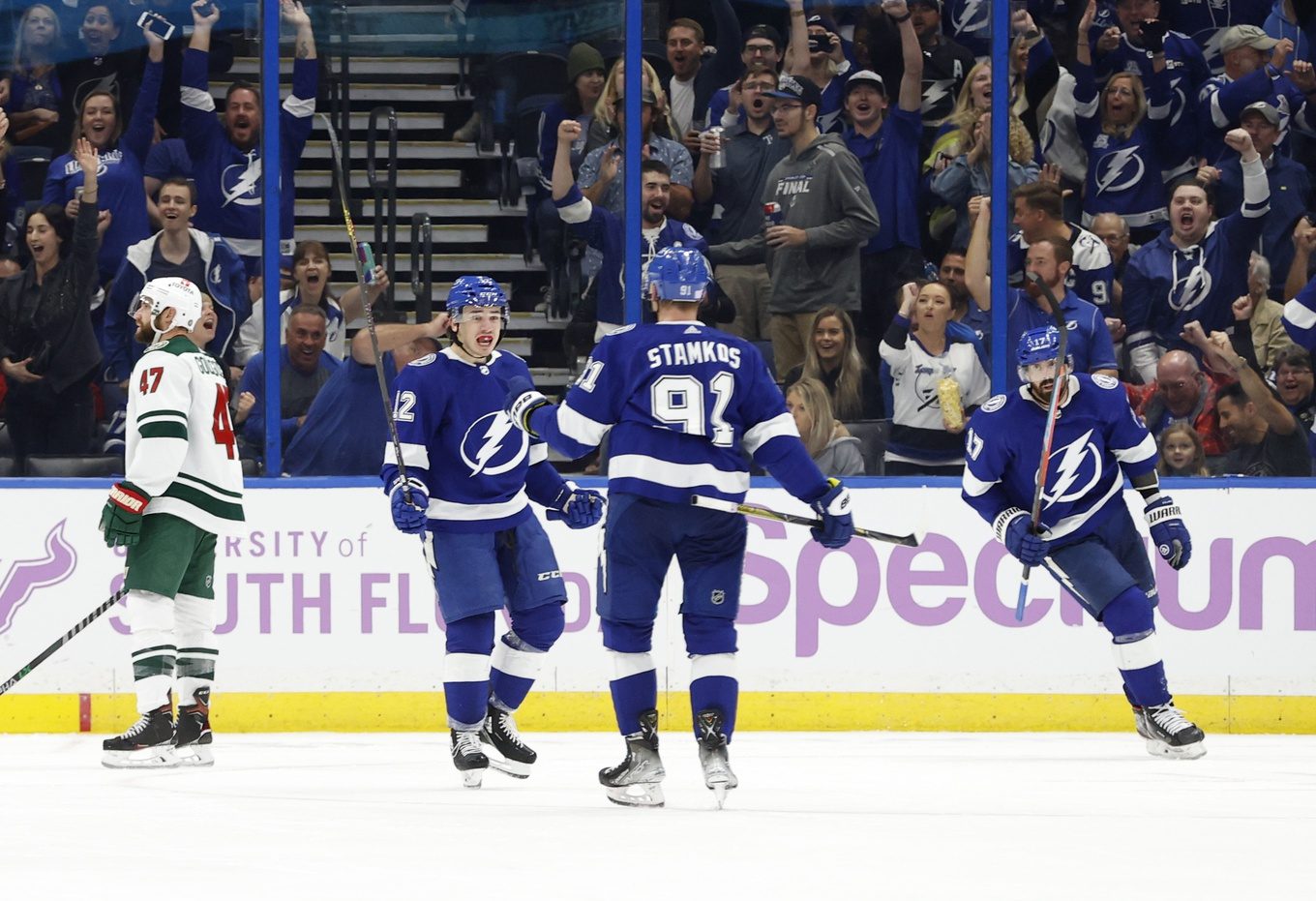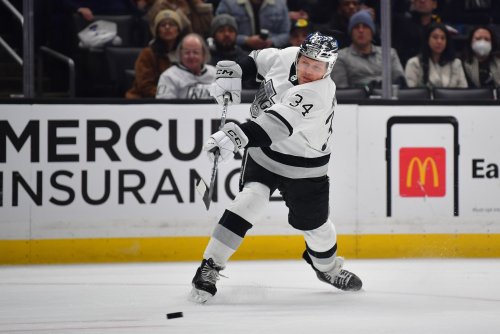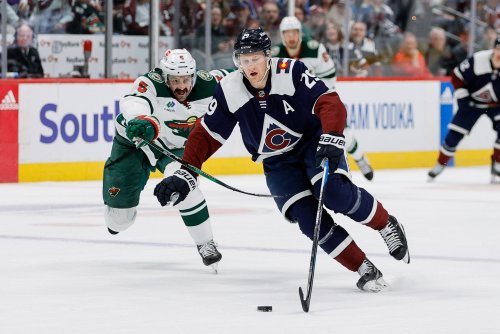
The NHL has always been a copycat league. Coaches emulate other successful systems year after year, decade after decade. The problem for the 2021-22 Minnesota Wild was that they should have been paying closer attention to what a successful power play looks like in the modern NHL.
A power play that ranked 18th in the league in the regular season unsurprisingly converted on just 16.4% of their chances in the postseason, leading many to question how they went a whole season without any real changes. For a team as dominant as the Wild at 5-on-5, their special teams failed them -- particularly their power play when you consider the amount of elite talent the Wild possessed this year.
So, where do we start?
If you want a great comparison of what a successful power play looks like, the Stanley Cup Final is currently showcasing the Tampa Bay Lightning, which might have the most consistently dominant power play of the past decade. They may have finally met their match against the Colorado Avalanche in the FInal, but they remain one of the best examples for teams to emulate if they want to improve their power play. So, in this exercise, we’ll highlight how the Lightning continue to churn out top-10 power-play units while the Wild continue to spin their tires on the man advantage.
Tampa Bay's Power Play System
The 1-3-1 power-play setup has been a staple in the NHL for well over two decades. There is really no re-inventing the wheel when it comes to what system an NHL team deploys once they are set up in the offensive zone. So if the Wild are using the same system as every successful power play in the NHL, why are we spending time talking about it? Because it’s imperative to understand how the 1-3-1 operates to truly encapsulate just why the Wild are misusing it.
The 1-3-1 is built on predetermined options, options even the penalty killers are all aware of. The problem for the penalty killers is they simply can’t account for all options during an entire two-minute kill if the opposing team knows how to execute the 1-3-1 properly. There is some creativity involved in its deployment. But for the most part, it’s a system designed to take the option the penalty killers are making available.
Here are a few of those examples of creating those options. The power play is designated with F1-F5 and penalty kill designated as defenders D1-4. The power play always attempts to get the puck to the flank (F1) and work from there. For Tampa Bay, this is Nikita Kucherov. For the Wild, it starts with Kirill Kaprizov.
The idea is to send the puck down low to F3, who then quickly one-touches a pass to the bumper position (F2) for a quick one-timer on net. If the penalty kill takes away the bumper position, this can open up a one-timer on the back door from a pinching F4 or even back to F1 for a high-percentage shot on net. The key again is F3 has more high-danger options than the penalty killers can defend.

If the penalty killers key in on taking away the high-danger chances created from the bumper position and F3 down low, the skill players on the outside can pass the puck quickly to open up cross-seam shots. For instance, F1 can opt to pass the puck across to F4 for a quick one-timer. For Tampa Bay, this is future Hall of Famer Steven Stamkos unleashing one-timers from the left circle.

If the penalty kill quickly adjusts to defend that shot by widening their penalty box or diamond formation, F1 now has the option to slide a quick pass to F2 for another high danger shot.

As you can see, there is no shortage of options for the 1-3-1 power play, and those were just a few examples. The players on the ice simply need to understand exactly what those options are depending on how the penalty kill is aligned. With intelligent, skilled players, the 1-3-1 should provide resounding success, which is why every team uses it.
Well, hold on, this past year’s version of the Wild was the best in team history, scoring the most goals and finishing with the most wins in franchise history. With elite goal scorers like Kaprizov and Kevin Fiala and tremendous playmakers in Mats Zuccarello and Matt Boldy, how on earth were they so pedestrian if they were using the best power-play system?
Now that we’ve established the Wild are in the right system, what’s the problem? How are they not experiencing results to that of a similarly-talented Lightning team? In short, Tampa Bay has more right-handed shots on their team. That’s not a joke. The most significant difference between the Wild and Lightning on the power play is simply a lack of right-handed shots.
Personnel/Deployment of Players
A fundamental rule in the 1-3-1 is that it’s imperative to have the correct handedness in each location to maximize those high-danger options we discussed earlier -- or as much as possible. If Steven Stamkos on the far flank position is left-handed instead of right-handed, that cross-seam pass from Kucherov isn’t nearly as dangerous. If that play to Stamkos isn’t a large concern for defenders, they won’t start cheating his direction to open up the high-percentage quick passing play to the bumper position in the middle. Again, the success of the 1-3-1 is predicated on having multiple high-danger options at all times. The more times you put a player in the wrong position, those high-danger chances decline, and your power play is far easier to defend.
Here is how the handedness of each position should lay out, considering you want your one-timer play being to a right-handed player in F4.

Tampa Bay adheres to these rules perhaps better than any team. It starts with Kucherov on the strong flanker side (F1) being left-handed. Right-handed Brayden Point mans the bumper position (F2), with left-handed Alex Killorn down low (F3) and the aforementioned right-handed Stamkos on the opposite flank (F4). It doesn’t hurt to round out your power play with another future Hall of Famer, Victor Hedman, at the point.
Tampa Bay, a team loaded with talent, focuses more on getting the correct handedness into each power play position over which player has the best offensive abilities. When they have missed Point at times this postseason due to injury, they didn’t turn to gifted left-handed scorers such as Ondrej Palat or Anthony Cirelli to play the bumper position on their first power-play unit. Instead, they opted for 37-year-old Corey Perry, who's right-handed. Perry has been an elite goal-scorer throughout much of his career but has certainly taken a step back due to age. However, the Lightning prioritize a player's handedness over their skillset, ensuring their power play continues to produce multiple high-danger scoring chances no matter who has the puck.
The Wild chose to approach their power play a little different, partly due to a lack of right-handed shots, but they also have a few miscast spots. Like the Lightning, they start their power play with their Russian superstar, Kaprizov, at the strong flank (F1) with a creative left-handed forward down low, Zuccarello (F3). From there, they start to break the rules.
Dean Evason placed Eriksson Ek (F2) and Fiala (F4) in extremely crucial roles on their off hands, rendering them both useless to high-danger one-timers. Having two left-handed players in spots that are supposed to be occupied by right-handed shots immediately handcuffs their ability to generate high-danger options on the power play. If the Wild want to improve their power play, they need more right-handed forwards to man those spots.
Beyond that, they also need a powerful right-handed shot from the opposite flank (F4), one that teams have to continuously respect out of fear of getting beat. A common theme with the league's most dominant 1-3-1 power plays starts with the cross seam one-timer. Alex Ovechkin has made a career out of that spot of the ice. The New York Rangers, pitiful at 5-on-5 in the playoffs, thrived off their power play all the way to the Eastern Conference Finals, and it started with Mika Zibanejad unloading bombs from the opposite side of Artemi Panarin.
Yes, the power play still comes second to being a good 5-on-5 team, but this year's playoffs have proven you need both to be a contender. If the Wild want to place themselves into the elite, they need to start prioritizing the personnel on their power-play, and it starts this summer with focusing on bringing in a few right-handed players who can be impactful on the power play.
Think you could write a story like this? Hockey Wilderness wants you to develop your voice, find an audience, and we'll pay you to do it. Just fill out this form.





Recommended Comments
There are no comments to display.
Join the conversation
You can post now and register later. If you have an account, sign in now to post with your account.
Note: Your post will require moderator approval before it will be visible.